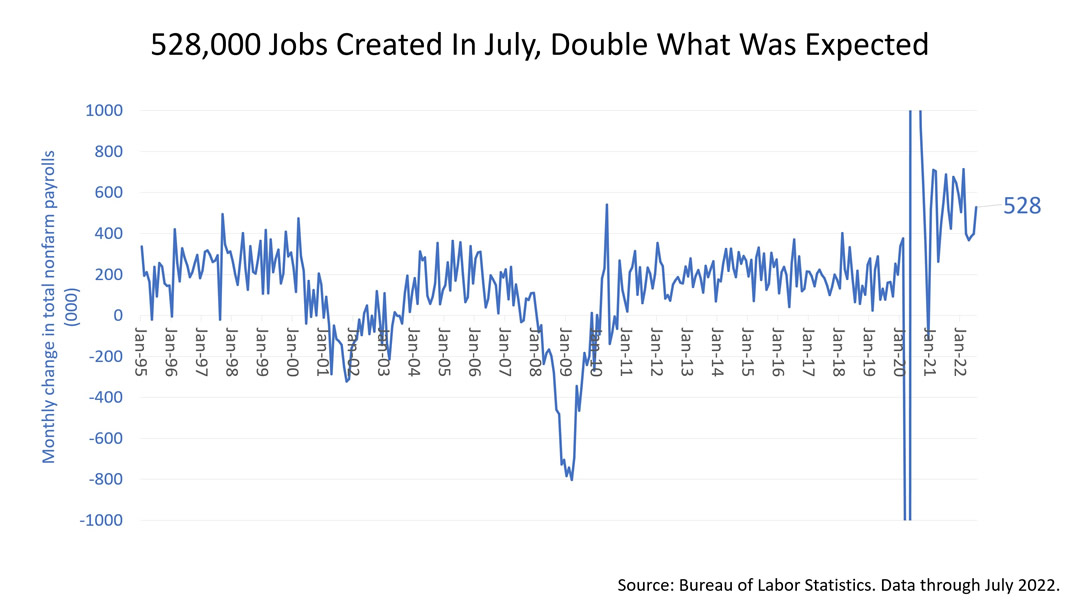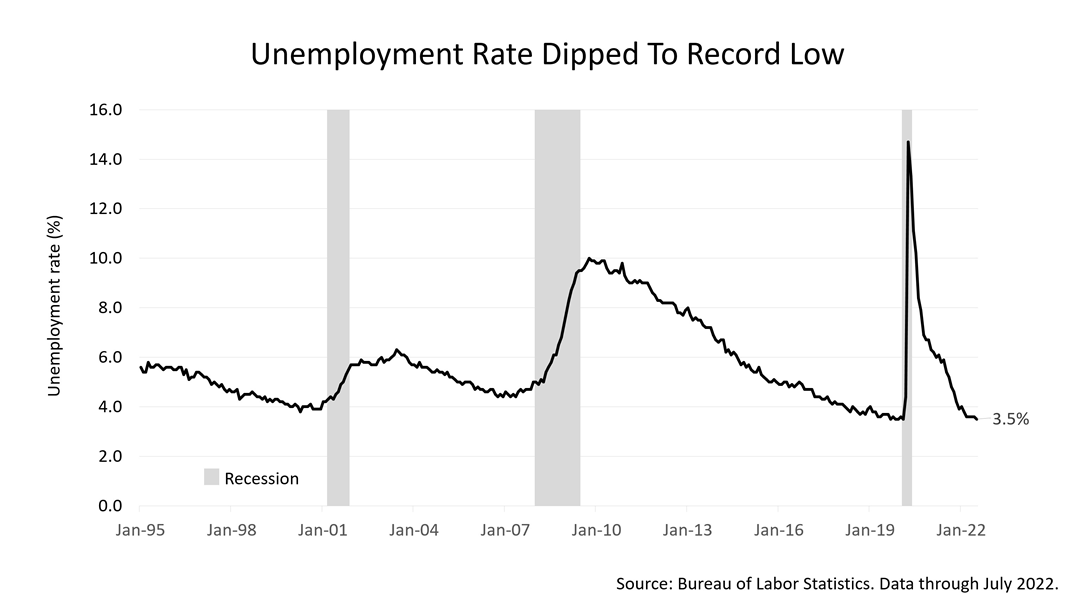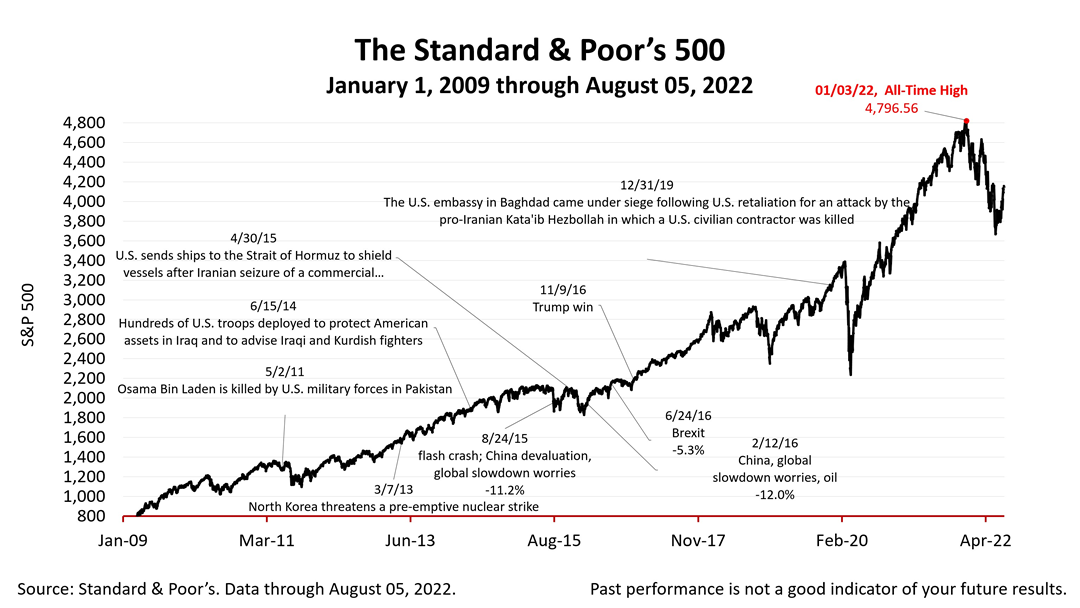The nation created twice as many new jobs as expected in July, according to the July employment situation report.
It is likely to mean that, despite two consecutive quarters of negative economic growth, the United States is not in a recession but is undergoing an inventory correction.
That’s one of multiple concurrent anomalies making the financial economic outlook more complicated than in living memory.

As a rule of thumb, a recession is defined as two consecutive quarters of negative economic growth. So, with the release of Bureau of Economic Analysis data on July 28 showing the economy shrank nine-tenths of -1% in the second quarter following a first-quarter growth rate of -1.5%, you might think the nation has entered a dreaded recession.
However, news on Friday, August 5th of the creation of 528,000 new jobs in July indicates a recession is not unfolding.
The economy is beset by multiple anomalies.
The March 2020 pandemic forced a partial shutdown of the economy. It was followed by an unprecedented government response -- trillions of direct transfer payments to consumers, which caused supply chain bottlenecks, inflation, labor market dislocation, and was complicated by Russia’s invasion of Ukraine in February, which triggered an energy and political crisis in Europe as well as the U.S.
With the nation adding 528,000 new jobs in July, the hopes that the Federal Reserve can engineer a soft landing and slow the economy without job growth remains alive and well.
The unemployment rate fell to 3.5% in July. That’s a record low dating back decades. This is another positive sign.
In addition, both just-released monthly surveys of employers showed the number of jobs in the U.S. recovered to pre-pandemic levels.
The labor participation rate remains a hindrance to growth, but car sales were up in July, and the Institute of Supply Management index of service company purchasing managers, which accounts for 89% of the economy, rose sharply in July. Moreover. ISM’s forward-looking “new orders” index is strong, indicating rising growth is underway.
The Standard & Poor’s 500 stock price index closed Friday at 4,145.19. The index lost -0.16% from Thursday and gained +0.36% from a week ago. The S&P 500 price index is up +13.5% from the January 3rd all-time high.
The Standard & Poor's 500 (S&P 500) is an unmanaged group of securities considered to be representative of the stock market in general. It is a market-value weighted index with each stock's weight proportionate to its market value. Index returns do not include fees or expenses. Investing involves risk, including the loss of principal, and past performance is no guarantee of future results. The investment return and principal value of an investment will fluctuate so that an investor's shares, when redeemed, may be worth more or less than their original cost. Current performance may be lower or higher than the performance quoted.




